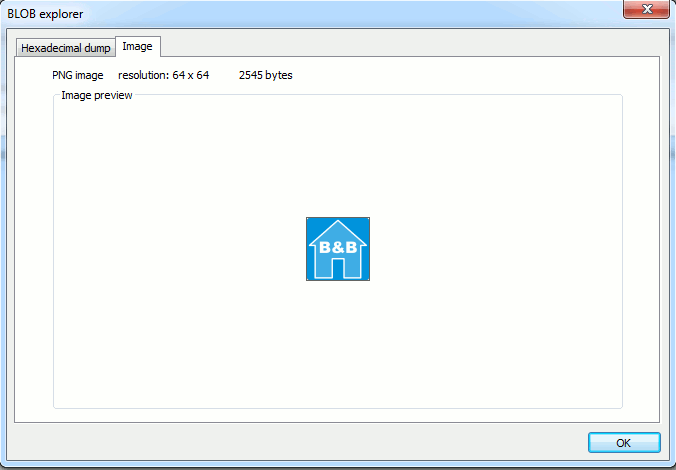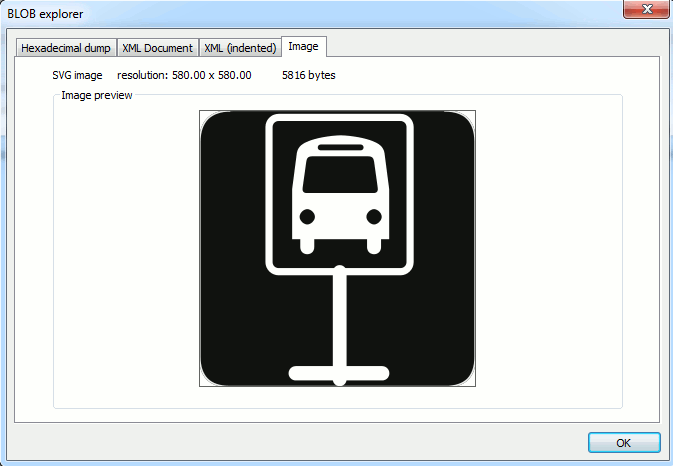back to XmlBlob main page
External Graphic Resources - Intro
SLD/SE styling could eventually require some external graphics resource: e.g. small images to be used as map symbols, or even as pens or stipples.Two different kinds of graphics resources are supported:
- small bitmaps (i.e. raster images), usually expected to correspond to one of the standard WEB formats (GIF, PNG or JPEG).
- Scalable Vector Graphics SVG images.
- the main difference between them is that raster images are very problematic to be resized, while vector images can be easily rendered at any arbitrary scale.
<PointSymbolizer>
<Graphic>
<ExternalGraphic>
<OnlineResource xlink:type="simple" xlink:href="http://mywebsite.com/pointsymbol.png" />
<Format>image/png</Format>
</ExternalGraphic>
</Graphic>
</PointSymbolizer>
As the above SLD/SE snippet shows, an external graphics is expected to correspond to some <OnlineResource> available on the WEB: xlink:href points to the corresponding URL, and <Format> specifies the expected mime-type.
The "SE_external_graphics" table
This DB table is specifically intended to implement External Graphics support; you should not manually create this table, always use the standard CreateStylingTables() SQL function so to create any SLD/SE related table.- xlink_href (Primary Key) exactly corresponds to the URL referenced by SLD/SE style documents.
- resource (BLOB) does contain the actual graphic resource payload.
- title, abstract and file_name are optional columns intended to facilitate a better human readability and to simplify overall handling of all external graphic resources stored within the DB.
Please note: xlink_href isn't actually a genuine URL; it simply is an internal Primary Key, so if a corresponding WEB URL doesn't exist at all this is absolutely not an issue.
|
Note for client apps developers: the SE_external_graphics table simply acts as an internal cache. So the optimal access strategy expected to be implemented is as follows:
|
A practical tutorial by real examples
In this example we'll use the samples contained into the xml-samples/graphics folder.export "SPATIALITE_SECURITY=relaxed"For didactic simplicity we'll use the unsafe SQL functions supporting direct access to external files stored into the file-system.
Remember: you have to explicitly set the SPATIALITE_SECURITY=relaxed environment variable in order to enable all unsafe SQL Import/Export functions.
SELECT RegisterExternalGraphic( 'http://www.myserver.com/aerodrome.png', BlobFromFile( 'C:/xml-samples/graphics/aerodrome.png' ) ); ----- 1The RegisterExternalGraphic() SQL function inserts an external graphic resource into the SE_external_graphics table.
Any attempt aimed to directly perform any INSERT or UPDATE SQL statement on behalf of SE_external_graphics is strongly discouraged; always using the abstract function RegisterExternalGraphic() is warmly recommended, and will preserve long-term compatibility against subsequent releases.
- the RegisterExternalGraphic() SQL function in its simpler form simply requires passing two arguments:
- the first argument corresponds to the pseudo URL, i.e. to xlink:href.
- the second argument is expected to be a BLOB containing the resource's payload.
- in this first example we've just inserted a PNG image; the image payload has been loaded from the external file by invoking the BlobFromFile() Import function.
SELECT RegisterExternalGraphic( 'http://www.myserver.com/aerodrome.tif', BlobFromFile( 'C:/xml-samples/graphics/aerodrome.tif' ), 'aerodrome', 'raster map symbol: aerodrome (TIFF 56x56)', 'aerodrome.tif' ); ----- 0Please note well: a validating Trigger always checks if the payload to be inserted does actually corresponds to some acceptable mime type.
In this case we've just attempted to insert a TIFF bitmap; but TIFF isn't a valid W3C format, so the Trigger has rejected this operation; and consequently RegisterExternalGraphic() in this case returned 0, i.e. failure.
SELECT RegisterExternalGraphic( 'http://www.myserver.com/aerodrome.png', BlobFromFile( 'C:/xml-samples/graphics/aerodrome.png' ), 'aerodrome', 'raster map symbol: aerodrome (PNG 56x56)', 'aerodrome.png' ); ----- 1RegisterExternalGraphic() has a more complex form accepting three more arguments, corresponding respectively to a title, an abstract and a file-name.
None of them are strictly indispensable; anyway always specifying a richer set of human readable informations surely helps in order to maintain your repository of external graphic resources in a properly ordered and easily accessible state.
SELECT RegisterExternalGraphic( 'http://www.myserver.com/helicopter.svg', XB_Create( XB_LoadXML( 'C:/xml-samples/graphics/helicopter.svg' ) ) ); ----- 1In this third example we've just inserted an SVG resource; SVG is actually based on XML, so we've used the XB_Create() SQL function in order to create a valid XmlBLOB payload. And then in turn we've invoked XB_LoadXML() in order to properly load the XML Document from the external file.
SELECT RegisterExternalGraphic( 'http://www.myserver.com/bus_stop.svg', XB_Create( XB_LoadXML( 'C:/xml-samples/graphics/bus_stop.svg' ) ), 'bus stop', 'vector map symbol: bus stop (SVG)', 'bus_stop.svg' ); ----- 1Same as above, this time using the full qualified form of RegisterExternalGraphic().
SELECT RegisterExternalGraphic( 'http://www.myserver.com/bus_stop.svg', XB_Create( XB_LoadXML( 'http://www.sjjb.co.uk/mapicons/svg/transport/bus_stop2.svg' ) ), 'bus stop', 'vector map symbol: bus stop (SVG, revised)', 'bus_stop.svg' );Please pay attention: this final example shows two interesting facets:
- you can use RegisterExternalGraphic() so to update an already existing resource definition: if the xlink_href value is already defined all previously defined values will be replaced by the newer ones.
- you can use XB_LoadXML() so to directly access any WEB URL.
SELECT * FROM SE_external_graphics_view;
| xlink_href | title | abstract | resource | file_name | mime_type |
|---|---|---|---|---|---|
| http://www.myserver.com/bed_and_breakfast.png | *** undefined *** | *** undefined *** | BLOB sz=2545 PNG image | *** undefined *** | image/png |
| http://www.myserver.com/aerodrome.png | aerodrome raster map | symbol: aerodrome (PNG 56x56) | BLOB sz=3725 PNG image | aerodrome.png | image/png |
| http://www.myserver.com/helicopter.svg | *** undefined *** | *** undefined *** | XmlBLOB-SVG sz=2825 (XMLsz=7851) | *** undefined *** | image/svg+xml |
| http://www.myserver.com/bus_stop.svg | bus stop | vector map symbol: bus stop (SVG, revised) | XmlBLOB-SVG sz=2259 (XMLsz=6121) | bus_stop.svg | image/svg+xml |
The SE_external_graphics table is supported by a corresponding VIEW (not surprisingly) named SE_external_graphics_view.
If you are curious enough, you'll quickly discover that this VIEW exactly corresponds to the original table, and that its (really modest) added values is in that a further mime_type column is made immediately available. This simply requires invoking the GetMimeType() SQL function on behalf of the resource's own payload.
spatialite_gui specific support
| You'll probably remember that spatialite_gui already supported a nice BlobExplorer GUI-tool allowing to pre-view any image stored as a BLOB into the DB. |  |
| The latest spatialite_gui 1.6.1 is now able to fully support SVG images as well. |  |
useful related resources
The SJJB project (strictly related to Open Street Map) offers a really nice and very rich collection of SVG/PNG map symbols, released under the CC-0 license terms (i.e. released on the Public Domain, absolutely no imposed constrains of any kind).Surely a highly valuable resource for all peoples interested to maps; strongly recommended.
back to XmlBlob main page